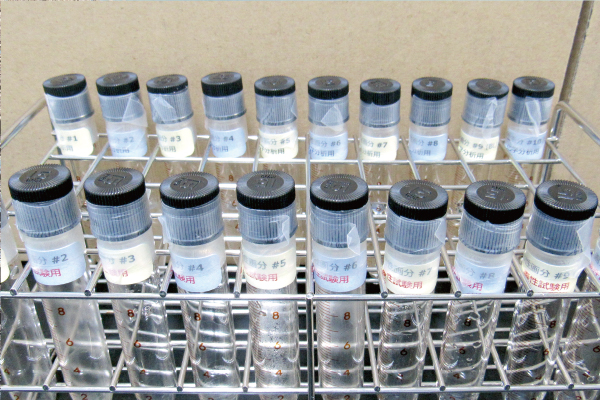Environmental Chemistry Lab, Department of Applied Chemistry,
Faculty of Science and Technology, Keio University
Led by Tomoaki OKUDA, Ph.D.
Research
Home > Research > Highlights [Environmental Issues in Subway Stations and Enclosed Spaces]
Highlights
- Toxicity Assessment of Particulate Matter
- Worldwide Application of Our Environmental Research
- Particle Charging State
- Environmental Issues in Subway Stations and Enclosed Spaces
- Super Practical Human and Environmental Research enforcing Application and Social Implementation
Environmental Issues in Subway Stations and Enclosed Spaces
The environmental quality standard for PM2.5 was set in Japan in 2009. More than 10 years have passed since then, and Japan’s outdoor PM2.5 has been decreasing gradually. On the other hand, concerns have been raised over local air pollution in enclosed spaces such as subway stations. We have carried out a detailed investigation on particulate matter pollution in a subway station, and the results are broadcasted on TV and in newspapers often. We aim to develop an integrated system that can visualize the environmental information and comprehensive improvement of air quality in enclosed spaces, working alongside many organizations in industrial, academic, and governmental sectors.
PM2.5 Investigations in a Subway Platform
We carried out a detailed investigation at a subway station platform studying particulate matter pollution, looking at various parameters, such as the time trend of PM2.5 concentrations and the chemical compositions of aerosol particles. The results have been broadcasted on TV and in newspapers repeatedly, receiving widespread attention.
Snap Shots
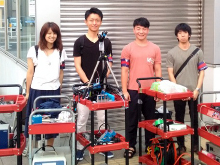 Preparations for the investigation on the air quality in a subway station started at 4am the day of testing.
Preparations for the investigation on the air quality in a subway station started at 4am the day of testing.
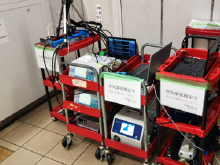 Experimental setup of many monitoring instruments for the investigation of air quality at the subway platform.
Experimental setup of many monitoring instruments for the investigation of air quality at the subway platform.
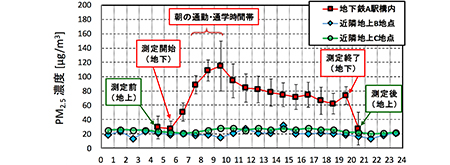 PM2.5 concentrations at the subway platform compared with the outside environment.
PM2.5 concentrations at the subway platform compared with the outside environment.
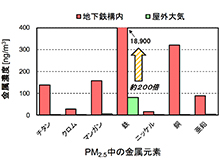 Chemical compositions of particles collected at the subway platform compared with the outside environment.
Chemical compositions of particles collected at the subway platform compared with the outside environment.
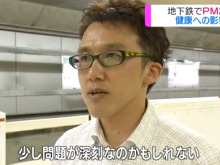 The results have been broadcasted on NHK and TV-asahi television programs, as well as being reported in many newspapers.
The results have been broadcasted on NHK and TV-asahi television programs, as well as being reported in many newspapers.
Characterization of Particulate Matter Collected in Subway Stations
Particulate matter collected in subway stations contain heavy metals such as iron and chromium. Several metals have highly reactive forms, therefore particulate matter in subway stations may be more toxic than outside aerosol particles. We collected particulate matter in subway stations, and analyzed particle morphology using SEM, elemental analysis with EDXRF, and chemical speciation using XAFS.
Snap Shots
 SEM image of aerosol particles collected in a subway platform.
SEM image of aerosol particles collected in a subway platform.
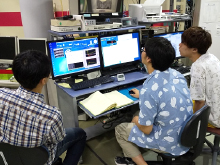 XAFS experiment has been carried out in SAGA-LS, Beam Line 11.
XAFS experiment has been carried out in SAGA-LS, Beam Line 11.
Performance evaluation of the monitoring device for air quality in enclosed spaces such as subway platforms
Enclosed spaces such as subway platforms are considered to be high in particulate matter concentrations due to insufficient air ventilation. Simultaneous multi-point monitoring is required to understand the actual source and behavior of particulate matter in the enclosed environment. Although automated instruments for PM2.5 monitoring have been used for national and local governmental monitoring programs, these are very expensive and too heavy to carry around. Therefore, cheap, portable and precise devices are necessary for simultaneous multi-point monitoring. Nowadays, many portable PM2.5 monitors are available, but their dependency on relative humidity and difference in instrumental response compared with the actual particle size distribution have not been investigated throughly. This study aims to evaluate the performance of these portable PM2.5 monitors.
Snap Shots
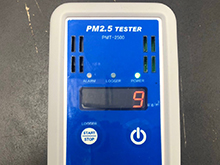 An example of PM2.5 monitor which displays PM2.5 mass concentrations in real time.
An example of PM2.5 monitor which displays PM2.5 mass concentrations in real time.
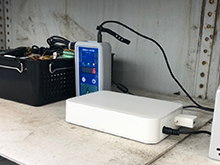 Evaluation tests have been conducted using several types of the real time PM2.5 monitoring devices simultaneously.
Evaluation tests have been conducted using several types of the real time PM2.5 monitoring devices simultaneously.
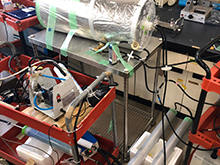 Evaluation test of the effect of hygroscopicity on the measurement results by the PM2.5 monitor has been conducted.
Evaluation test of the effect of hygroscopicity on the measurement results by the PM2.5 monitor has been conducted.
Research
Vision
Research Topics
Publications
Research Grants


